
Consumer Insights
Uncover trends and behaviors shaping consumer choices today
Procurement Insights
Optimize your sourcing strategy with key market data
Industry Stats
Stay ahead with the latest trends and market analysis.
Trending Now



The global air freight market reached a volume of nearly 109.67 MMT in 2024 due to the surge in demand for commercial aircraft. The market is expected to grow at a CAGR of 12.00% during the forecast period of 2025-2034 to attain a volume of 340.62 MMT by 2034. The air freight market is an important part of the global supply chain, as it is an efficient and rapid way to transport goods. Freight forwarders cooperate closely with cargo handling agents and customs brokers for seamless shipment of products. Commercial aviation is important for moving perishable goods, which need to be delivered timely. The air freight industry is undergoing transformation in response to mounting demand for faster shipping times, flights guaranteeing reliability, efficiency and real-time tracking. In this highly competitive marketplace, many businesses rely on freight forwarders and cargo handling agents to help them coordinate and optimize logistics.
Base Year
Historical Year
Forecast Year
According to the International Air Transport Association (IATA), the air cargo sector has experienced a remarkable surge in demand, with an impressive 18.4% year-on-year growth recorded in January 2024. This significant increase reflects the ongoing recovery and expansion of global trade, driven by factors such as the rise in e-commerce and the need for speedy delivery of goods. The robust growth in air cargo demand has led businesses to rely on air freight for its efficiency and reliability in transporting high-value products, leading to air freight market expansion.
As per industry reports of 2023, the North America to Asia route accounted for 26.9% of all air cargo movements, highlighting its critical role in global logistics. This route serves as a vital corridor for trade between two of the world's largest economies, facilitating the swift movement of goods ranging from electronics to perishables.
Furthermore, Hong Kong International Airport processed an impressive 4,199,196 metric tons of freight in 2023, solidifying its position as one of the world's busiest air cargo hubs. The airport's extensive infrastructure and connectivity enable it to handle diverse cargo types efficiently, catering to the increasing demand from global markets. This substantial volume processed at Hong Kong International Airport exemplifies the airport's pivotal role in facilitating international trade and supporting economic growth in the region.






Value in MMT
2025-2034
Air Freight Market Outlook
*this image is indicative*
Read more about this report - REQUEST FREE SAMPLE COPY IN PDF
Increasing international trade, expansion of global networks and partnerships, and growth of e-commerce sector are the key trends propelling the market growth.
Various technological advancements in air freight are bolstering the increasing demands for faster and more secure air freight services. A digital platform called Cargo.one makes it easier for freight forwarders to manage capacity and price by enabling them to reserve air cargo space in real-time. Airline bookings are expedited by its direct integration. As per air freight market analysis, companies like Lufthansa Cargo have implemented IoT sensors to monitor cargo conditions in real-time, ensuring the safe transport of sensitive goods. The AI-powered engines from Rolls-Royce can track their performance in real-time, alerting problems before they arise and increasing the effectiveness of air freight operations. Major ground services company Swissport has started utilizing robotic autonomous trucks to move cargo inside airport premises, greatly increasing loading and unloading efficiency. Raft recently announced that forwarder customers use its AI platform to successfully process more than $10bn in freight invoices. Complete digitization of a laborious process streamlines procedures and enables human teams to move from updating data to customer service.
Increasing international trade is one of the key air freight market trends. In 2024, global air cargo volumes saw a growth of 13.2% year-to-date, driven by trade on key routes, including Asia-Pacific, Europe, and North America. Cross-border e-commerce has been a primary contributor, with demand for air freight capacity expanding across major trade lanes. Additionally, air cargo demand on the Middle East-Europe route surged by 32.2%, highlighting the impact of increasing global trade. Growing trade between North America and Asia drove Los Angeles International Airport (LAX) to accommodate 200,000 tons of international freight by mid-2023. 485,000 tons of air cargo were handled at Singapore Changi Airport between April and June of 2024, a notable increase in air cargo volumes. By comparison, this is a 16% increase from the same time previous year. Strong cargo movements between Singapore and important markets like the US and China are credited with the development.
Leading players such as FedEx have been actively expanding their global networks and forming strategic partnerships to drive growth and add to air freight market development. An example is FedEx's acquisition of TNT Express, which significantly expanded its European network and service capabilities. In 2022, Maersk, traditionally a maritime giant, expanded into air freight by acquiring Senator International and launching the Chicago Air Freight Gateway near O’Hare Airport. This facility provides expedited handling and is designed to integrate Maersk’s global supply chain services. Such initiatives increase Maersk’s ability to move goods swiftly across major trade routes. Major airlines are collaborating with logistics companies to optimize supply chains and boost productivity. For instance, Air Canada transported goods from the United States to Europe, Latin America, and the Asia-Pacific area by expanding its freighter operations in North America and Latin America by acquiring additional cargo jets.
The rise of e-commerce has propelled the demand for air freight services, with companies like UPS developing specialized solutions to cater to this growing market segment. UPS's investment in automated sorting systems and dedicated e-commerce facilities exemplifies the industry's response to the e-commerce boom. In response to increased e-commerce air freight demand, airlines have expanded their cargo capacity. For instance, air exports from the Asia-Pacific region rose by 13% in April 2024. The strong customer demand in North America for online-ordered products like electronic devices and flowers is another factor fueling this expansion. In the first seven months of 2023, the amount of cross-border e-commerce handled by Shenzhen Bao'an International Airport doubled. Between January and July, the Chinese airport handled 93,000 tonnes of cross-border e-commerce traffic, an increase of 101% over the previous year.
One of the key trends in the air freight industry is the growing impact of e-commerce on air cargo transport. With the rise in demand for speedy delivery, air freight plays a critical role in cross-border transportation, especially in the context of the global supply chain. The booming e-commerce sector has forced many businesses to look for advanced logistics solutions to satisfy customers' demands. In air freight, this trend is spurring innovation, building supply chain resilience by minimizing delays, and streamlining delivery time. Air freight contributes significantly to the overall development of air cargo as a driver of global trade.
The air freight sector is witnessing a significant change as technological advancements are being embraced to assist in making the process more sustainable and efficient. For instance, supply chain visibility is being enhanced via blockchain and artificial intelligence (AI). On the other hand, real-time tracking of cargo is being enabled by the Internet of Things (IoT). Predictive maintenance enhances aircraft performance and minimizes outages, thereby catering to the growing concerns about customs clearance. Additionally, sustainable practices are becoming a major business driver, including the transition to fuel-efficient aircraft and alternative fuels, which directly support carbon reduction targets and cater to the rising environmental concerns. Technology is further simplifying customs clearance processes, benefiting cargo handlers and improving overall air freight operations.
A major trend in the air freight market is the increased focus on regulatory frameworks and adherence to new regulations. However, IATA, ICAO and other organizations are tightening the standards of security in order to reinforce safety and guarantee airworthiness. Evolving security measures will require adapting cargo handling processes, and enhancements to air traffic management will be critical to operating efficiently. Environmental protection is another area of priority, and a growing number of frameworks are forcing companies to embrace carbon reduction strategies. These regulations from civil aviation authorities are giving rise to the future of air freight, as the industry works to balance security with sustainability.
One of the trends of the market is the changing customs regulations and their effect on air cargo operations. Due to this modification, air freight operators are now needing to comply with stricter clearance methods and security protocols. The TSA and other agencies are prioritizing whether shipments meet security requirements, especially if they cross international borders. Trends are spurring innovation within the cargo handling side of operations to facilitate the clearance of containers through ports. With the air freight industry continuing to expand, ensuring this regulatory landscape has become vital when it comes to the efficient and timely shipment of goods across the globe.
Increases in economic growth and emerging international trade result in a growing need for reliable air freight transportation solutions. Air freight is essential in the effective and timely delivery of high-value products like perishable items including foods and pharmaceuticals as well as humanitarian aid. The benefit of air cargo is that it is able to transport goods over large distances, enabling companies to address the growing demand for rapid delivery of goods. In addition, air freight is vital in the world of disaster relief supplies as it is the quickest way to get much-needed supplies to those in disaster-stricken locations.
Air freight companies are starting to expand air cargo networks to boost further market demand. Factors such as supply chain and customs brokerage advancements will aid in this growth and help streamline logistics. Most technological advancements revolve around improving operational efficiency and warehousing through automation and real-time tracking. There is also an increased focus on sustainable practices, influenced by environmental consciousness. In order to serve their clients, air freight companies have introduced sustainable supply chain management techniques such as fuel-efficient jets and carbon offset programs.
A significant part of the international supply chain relies on freight services to ship goods over long distances. Such companies serve different markets like the automotive market, retail market, pharmaceutical market, technology market and more. Depending on the nature of the goods, urgency and destination, freight is transported by air, sea or land. Technological advancements have also contributed to the exponential growth of freight services with better tracking, better route optimization, and cost-effectiveness. The freight sector must match the growing awareness about carbon emissions, and companies are investing in sustainable equipment to accomplish this objective.
The express services specialize in high-priority, time-sensitive deliveries for packages and documents within 24 hours. Such services are critical for industries that require fast-tracked processing, including e-commerce, healthcare, and law. Using state-of-the-art logistics systems, real-time tracking, and simplified customs clearance, express services guarantee that every shipment arrives on time. The same applies to the air express segment as demand for rapid arrival of goods is stamping over the e-commerce platforms resulting in the need for more flights as well as route optimization. These services are more dependable, safe, secure, and include benefits like same-day shipping and real-time tracking to make customers happy.
Mail services are still growing strong as an important means of communication. While traditional postal mail volumes have fallen due to digital communication, there remains significant demand for secure and timely delivery of mail, especially in the legal, governmental, and financial sectors. With gradual technology advancement, the mail services segment such as tracked deliveries, eDelivery with added security has grown. Air mail ensure quality and timely delivery of business documentation and packages.
In a county’s transportation and logistics network, domestic shipping plays the most vital role to move the service and goods within the borders. These services span from basic parcel delivery to freight and expedited services and are beneficial for a number of industries from retail, and production, to e-commerce. As e-commerce continues to grow, local services that provide quick, reliable and inexpensive delivery solutions are highly sought after. To prevent delays and expedite delivery within the domestic market, organizations also employ advanced technologies such as route optimization and real-time tracking. At the same time, domestic on-demand logistics providers are also preparing initiatives focused on climate through the inclusion of electric vehicle transportation as well as lower emission delivery methods.
International shipping permits companies to ship items globally. International air freight for delivery is typically used for high-value or time-sensitive goods, such as electronics, pharmaceuticals and perishable items. The increasing need for quick shipments has compelled companies to invest in more efficient customs clearance and security measures. There are also increasing allusions on a global level regarding carbon emanations and using environmentally stable systems, are affecting the administrations.
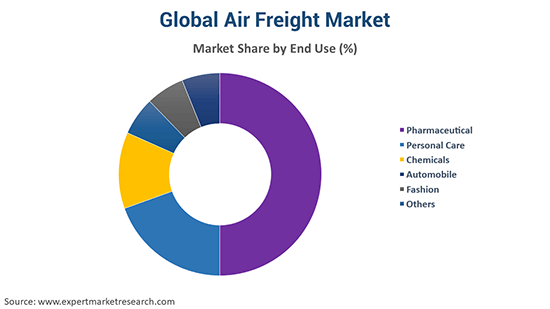
Read more about this report - REQUEST FREE SAMPLE COPY IN PDF
In air cargo and shipping, conveyers for personal end-users typically provide the reliable, fast delivery of everything from clothes to high-value goods like electronics or delicate items. As e-commerce flourishes, private consumers increasingly want speed with their shipping, often foregoing price for quicker delivery. These such services allow the private segment to acquire and broaden consumer bases for express delivery and door-to-door delivery. Sustainability is becoming more relevant to consumer purchasing decisions over time. It has also prompted logistics companies to use more sustainable practices, such as carbon offset programs and green shipping options.
Commercial and institutional end-use categories encompass businesses and entities are increasingly relying on freight and shipping services for transporting goods or supplies. These may include mighty corporations, district stores/manufacturers/universities/government authorities. Consequently, transport services are critical to integrated supply chain productivity for these end-users in diverse sectors, from healthcare to automotive to technology. In the commercial and institutional sectors, air freight is the most essential means of high-value or time-sensitive product transport. The commercial companies are increasingly searching for products or services to handle niche requirements such as specialized packaging, temperature-controlled transport or expedited clearance.
North America Air Freight Market Trends
North America, with its extensive infrastructure and a solid e-commerce sector, is a critical player in global trade making the regional air freight market a critical role. The U.S. and Canada represent large air cargo markets, with a considerable amount of both imports and exports. The market is growing at a rapid pace due to increasing demand for speedy and timely delivery services, particularly in the e-commerce industry. Additionally, environmental sustainability remains a top priority, meaning programs, like fuel for eco-efficient air travel and carbon offset programs.
U.S. Air Freight Market Trends
The U.S. air freight market is booming with robust demand for e-commerce, pharma and hi-tech. The United States is one of the largest international air cargo hubs, with a large domestic market and strong international trade links. The shift toward ever-quicker delivery times is propelling investment in next-day and even same-day shipping service, particularly for health care and high-value products. Moreover, technological advancements such as automation as well as real-time tracking and predictive analytics for improved operational efficiency and transparency are upholding the U.S. air freight industry. Regulatory evolution, especially in technology that seeks to improve security protocols and customs, also affects market dynamics.
Asia Pacific Air Freight Market Trends
The growth of the air freight market in the Asia Pacific region can primarily be attributed to industrialization, increasing trade and commercial growth and the emerging need for ecommerce. China is one of the largest air cargo exporters in the world and Japan and India are the other major regional players. The infrastructure in the region, featuring hub airports and extensive air cargo networks, is continually evolving to meet demand for faster service. An increasing demand for time-sensitive goods such as electronics, auto parts and pharmaceuticals has made the air cargo transport sector one of the fastest-growing in the logistics and transport industry. The growth of the air freight market is heavily influenced by the e-commerce industry−specifically, in China and India, demand for on-demand delivery services (i.e. express delivery services) is increasing. Additionally, technological trends like blockchain and real-time tracking systems are increasing supply chain visibility and efficiency in the region through artificial intelligence.
India Air Freight Market Trends
The air cargo market in India is growing at a rapid pace, buoyed by the country-wide manufacturing sector, the booming e-commerce sector and increasing international trade. Being one of the fastest growing economies in Asia, India has been quickly growing as an air cargo transportation hub of the globe. Air freight services are in great demand especially for the domains like pharmaceuticals, automotive, electronics, textiles, etc. New cargo terminals as well as expedited customs clearance procedures are making the air freight industry even more productive in the country’s growing airport infrastructure.
Europe Air Freight Market Trends
Europe’s air freight market benefits from a relatively dense major airports network and existing logistics hubs. Germany, the United Kingdom and France are other countries have added the market growth. E-commerce is driving the demand for faster delivery and more efficient shipping solutions, with upward trajectories also seen in the express and perishable products categories. European air freight operators are turning to technology-based solutions, such as real-time monitoring, digital documentation and automated customs processes, to improve these processes.
France Air Freight Market Trends
France is one of the most important European air freight markets with Paris Charles de Gaulle Airport--one of the world's busiest cargo airports. Being situated in the middle of world trade routes only adds to its significant position in the international air cargo network. The demand for express delivery services and the growth of e-commerce and pharmaceutical verticals are driving the market for express delivery services. Demand for high-value and time-sensitive products such as electronics and luxury devices are also increasing.
Air freight companies are increasingly offering express services and freight forwarding and a range of capabilities for cold-chain or time-sensitive shipments. As the demand for speedy, efficient air freight services rises, companies are looking to technologies such as real-time tracking, automation and artificial intelligence to ensure operational efficiency and improved customer experience. To top it off, sustainability is taking on a whole new dimension with players spending money on fuel-efficient planes, alternative fuels and carbon offset programs in order to meet the demands of environmental regulation. As the sector evolves, the competitors that innovate and meet growing consumer demand for speed, reliability and sustainability are likely to stay competitive.
Deutsche Post AG was founded in 1949 and is headquartered in Bonn, Germany. The company offers a broad range of services under the DHL, DHL Express, DHL Global Forwarding, and DHL Supply Chain brands-from letter mail and parcel delivery to comprehensive logistics services.
Headquartered in Brøndby, Denmark, DSV A/S was founded in 1976 and primarily deals in transportation and logistics expertise. Supply chain management, freight services, rapid delivery, and road, air, and rail transportation are within the company's core areas of competencies, with a core operational focus on perishables and medicines.
International Kuehne + Nagel AG is a Swiss-headquartered international leading provider in logistics and supply chain management that was established in the year 1890. The company was extremely involved in the environmental endeavor and operated value-added supply chain management, logistics, and freight forwarding services for various industries across the globe.
FedEx Corporation is an American holding company that provides shipment, transportation, and e-commerce solutions worldwide. It was founded in 1973, and its headquarters are in the United States of America. FedEx Express is renowned for excellent service and operates the world's largest cargo airline, delivering time-definite air-ground services to more than 220 countries.
*Please note that this is only a partial list; the complete list of key players is available in the full report. Additionally, the list of key players can be customized to better suit your needs.*
The study on the air freight market delivers detailed analysis on region-level perspective depending on specific contemporary industry trends. It considers various segments, such as service, destination, and end use. By assessing all these segments, this report presents a thorough discussion of market drivers, regulations, and emerging opportunities observed in the market.
Destination Outlook (Revenue, MMT, 2025-2034)
Service Outlook (Revenue, MMT, 2025-2034)
End Use Outlook (Revenue, MMT, 2025-2034)
Region Outlook (Revenue, MMT, 2025-2034)
*While we strive to always give you current and accurate information, the numbers depicted on the website are indicative and may differ from the actual numbers in the main report. At Expert Market Research, we aim to bring you the latest insights and trends in the market. Using our analyses and forecasts, stakeholders can understand the market dynamics, navigate challenges, and capitalize on opportunities to make data-driven strategic decisions.*
Get in touch with us for a customized solution tailored to your unique requirements and save upto 35%!
The global air freight market reached a volume of nearly 109.67 MMT in 2024.
The market is expected to grow at a CAGR of 12.00% during the forecast period of 2025 and 2034.
The market is being driven by the increased demand for high-technology products, rising consumer disposable income, robust growth in its automobiles industry, rise in construction activities, and rising investments.
Key trends aiding the market expansion include the high demand for pharmaceuticals and medical equipment and the growing need for oil and mining equipment.
Regions considered in the market are North America, Europe, the Asia Pacific, Latin America, and the Middle East and Africa.
Based on destination, the market is divided into domestic and international.
The leading end-use sectors in the industry are pharmaceutical, personal care, chemicals, automobile, and fashion, among others.
Key players in the market are Deutsche Post AG, DSV A/S, Kuehne + Nagel International AG, FedEx Corporation, Schenker AG, United Parcel Service of America, Inc., The Emirates Group, Cargolux International Airlines S.A., Nippon Express Co., Ltd., Kuehne+Nagel International AG, Hellmann Worldwide Logistics SE & Co. KG, Air France-KLM S.A., AirFreight.com, C.H. Robinson Worldwide, Inc.,CEVA Logistics, DB Schenker, DHL International GmbH, DIMOTRANS Group, GEODIS, Rhenus Group, and Ziegler Group., among others.
The market is estimated to witness healthy growth in the forecast period of 2025-2034 to reach a volume of around 340.62 MMT by 2034.
The Asia Pacific region held the largest share of the global market.
The booming e-commerce sector is the key driver of the air freight market.
Explore our key highlights of the report and gain a concise overview of key findings, trends, and actionable insights that will empower your strategic decisions.
| REPORT FEATURES | DETAILS |
| Base Year | 2024 |
| Historical Period | 2018-2024 |
| Forecast Period | 2025-2034 |
| Scope of the Report |
Historical and Forecast Trends, Industry Drivers and Constraints, Historical and Forecast Market Analysis by Segment:
|
| Breakup by Destination |
|
| Breakup by Service |
|
| Breakup by End Use |
|
| Breakup by Region |
|
| Market Dynamics |
|
| Competitive Landscape |
|
| Companies Covered |
|
| Report Price and Purchase Option | Explore our purchase options that are best suited to your resources and industry needs. |
| Delivery Format | Delivered as an attached PDF and Excel through email, with an option of receiving an editable PPT, according to the purchase option. |
Datasheet
One User
USD 2,499
USD 2,249
tax inclusive*
Single User License
One User
USD 3,999
USD 3,599
tax inclusive*
Five User License
Five User
USD 4,999
USD 4,249
tax inclusive*
Corporate License
Unlimited Users
USD 5,999
USD 5,099
tax inclusive*
*Please note that the prices mentioned below are starting prices for each bundle type. Kindly contact our team for further details.*
Flash Bundle
Small Business Bundle
Growth Bundle
Enterprise Bundle
*Please note that the prices mentioned below are starting prices for each bundle type. Kindly contact our team for further details.*
Flash Bundle
Number of Reports: 3
20%
tax inclusive*
Small Business Bundle
Number of Reports: 5
25%
tax inclusive*
Growth Bundle
Number of Reports: 8
30%
tax inclusive*
Enterprise Bundle
Number of Reports: 10
35%
tax inclusive*
How To Order
Our step-by-step guide will help you select, purchase, and access your reports swiftly, ensuring you get the information that drives your decisions, right when you need it.

Select License Type
Choose the right license for your needs and access rights.

Click on ‘Buy Now’
Add the report to your cart with one click and proceed to register.

Select Mode of Payment
Choose a payment option for a secure checkout. You will be redirected accordingly.
Track prices with detailed trend reports.
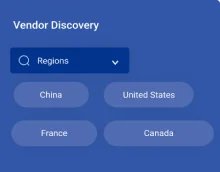
Analyse trade data for supply chain insights.

Leverage cost reports for smart savings

Enhance supply chain with partnerships.
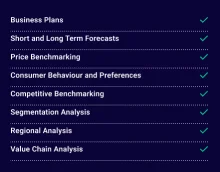
Gain insights to stay ahead and seize opportunities.
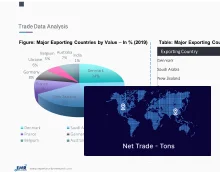
Get insights & trends for a competitive edge.
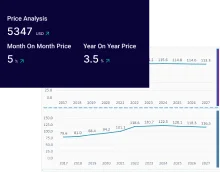
Track prices with detailed trend reports.

Analyse trade data for supply chain insights.

Leverage cost reports for smart savings

Enhance supply chain with partnerships.

Gain insights to stay ahead and seize opportunities.

Get insights & trends for a competitive edge.

Track prices with detailed trend reports.

Analyse trade data for supply chain insights.

Connect For More Information
Our expert team of analysts will offer full support and resolve any queries regarding the report, before and after the purchase.
Our expert team of analysts will offer full support and resolve any queries regarding the report, before and after the purchase.
We employ meticulous research methods, blending advanced analytics and expert insights to deliver accurate, actionable industry intelligence, staying ahead of competitors.
Our skilled analysts offer unparalleled competitive advantage with detailed insights on current and emerging markets, ensuring your strategic edge.
We offer an in-depth yet simplified presentation of industry insights and analysis to meet your specific requirements effectively.



Australia
63 Fiona Drive, Tamworth, NSW
+61-448-061-727
India
C130 Sector 2 Noida, Uttar Pradesh 201301
+91-723-689-1189
Philippines
40th Floor, PBCom Tower, 6795 Ayala Avenue Cor V.A Rufino St. Makati City,1226.
+63-287-899-028, +63-967-048-3306
United Kingdom
6 Gardner Place, Becketts Close, Feltham TW14 0BX, Greater London
+44-753-713-2163
United States
30 North Gould Street, Sheridan, WY 82801
+1-415-325-5166
Vietnam
193/26/4 St.no.6, Ward Binh Hung Hoa, Binh Tan District, Ho Chi Minh City
+84-865-399-124
United States (Head Office)
30 North Gould Street, Sheridan, WY 82801
+1-415-325-5166
Australia
63 Fiona Drive, Tamworth, NSW
+61-448-061-727
India
C130 Sector 2 Noida, Uttar Pradesh 201301
+91-723-689-1189
Philippines
40th Floor, PBCom Tower, 6795 Ayala Avenue Cor V.A Rufino St. Makati City, 1226.
+63-287-899-028, +63-967-048-3306
United Kingdom
6 Gardner Place, Becketts Close, Feltham TW14 0BX, Greater London
+44-753-713-2163
Vietnam
193/26/4 St.no.6, Ward Binh Hung Hoa, Binh Tan District, Ho Chi Minh City
+84-865-399-124
Share